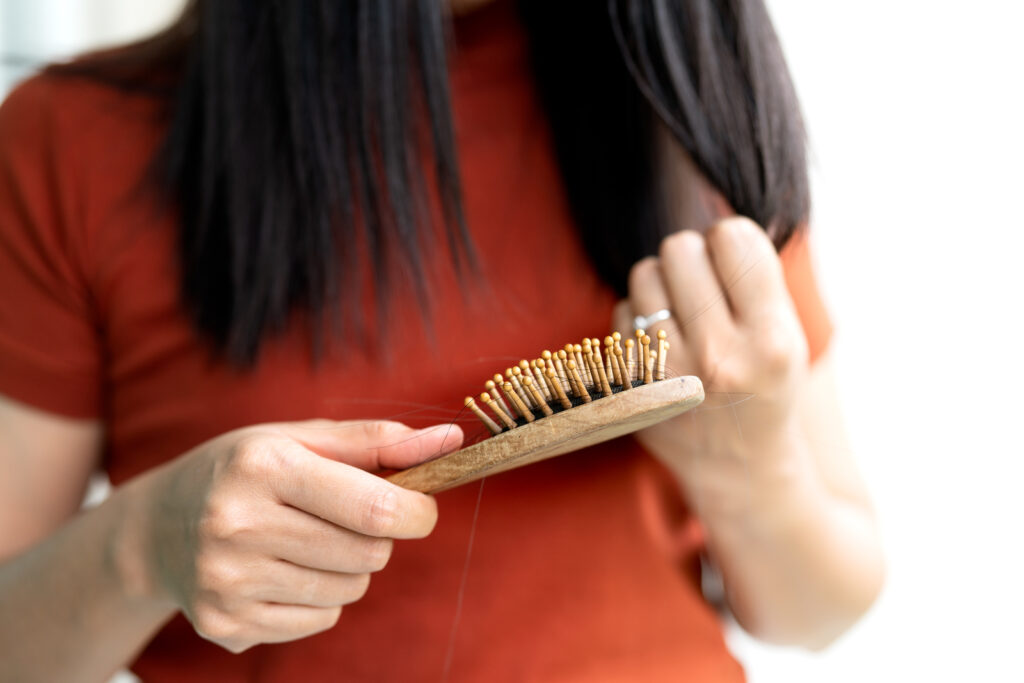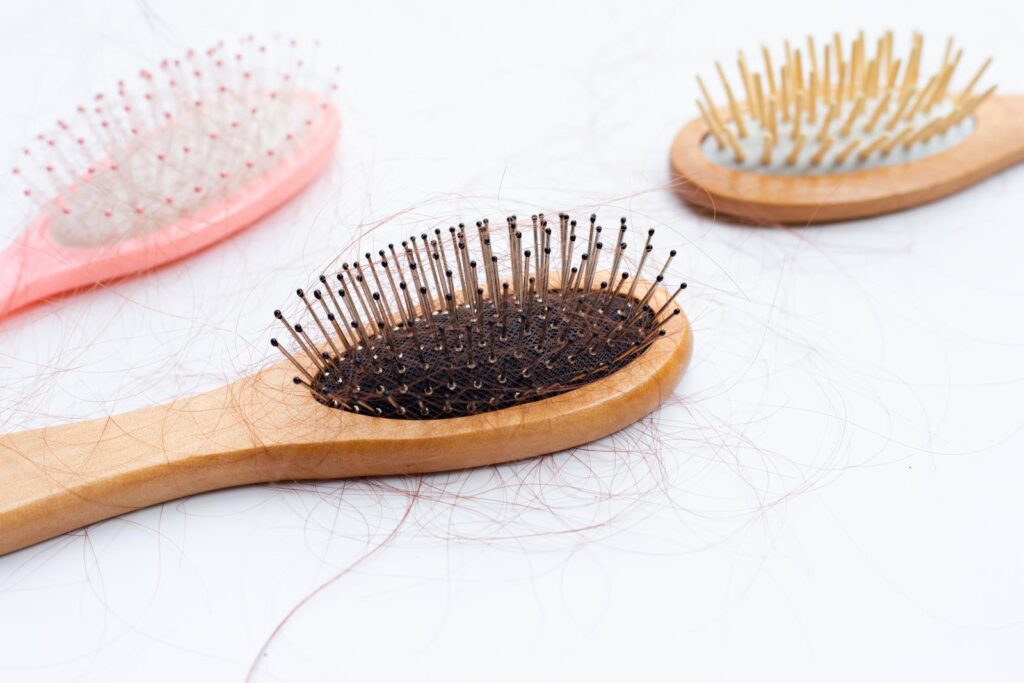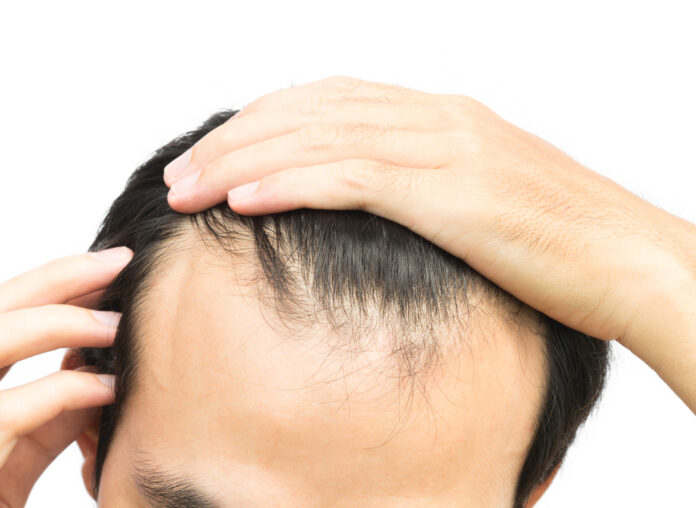As someone who loves rocking a good hat, I’d be lying if I said I hadn’t panicked every time I’ve taken my cap off and noticed a couple of stray hairs clinging to the inner band. I mean, could my favorite accessory secretly be causing my hair to thin out?! It turns out this concern is more common than you’d think.
So let’s bust this myth wide open – do hats actually lead to hair loss, or can you and your prized headgear live happily ever after? I’ve dug into all the evidence from real scientific studies to get you the facts. Keep reading to find out once and for all what impact our charming hats may (or may not) have on those precious locks!
The Theories Behind How Hats Could Cause Hair Loss
Before determining if hats do cause thinning hair, it’s important to understand what mechanisms could theoretically connect the two:
Friction and Tension Theory
There is speculation that friction between hat fabrics and hair shafts/follicles inflicts physical stress on the strands and roots over time. Some believe this chronic rubbing and tension traumatizes follicles to the point their growth cycles get disrupted, resulting in shedding and impeded regrowth.
The theory suggests materials like wool beanies or cotton baseball caps with stiff inner linings pose the biggest risk as they tightly “grab” onto hairs during movement. Too much repeat tugging may put undue strain on follicles. However, human studies supporting real-world friction loss are lacking.
Heat Exposure Theory
Poor ventilation and heat retention may subject scalp tissues under a hat to temperatures higher than normal. Some suspect such repeated heat strain, especially in already hot humid climates, may degrade follicles, damage protein structures crucial for growth, and hinder hair production.
Sweat and Oil Accumulation
Wearing fitted hats can seal in bodily oils and sweat against the scalp for prolonged periods. There are concerns this blocks pores and follicular openings, creates an environment conducive to inflammation/infection, and inhibits new growth.
Without evidence, all three mechanisms remain speculative. So which carry actual weight according to current science?

What Research Says: Can Hats Cause Thinning Hair?
Surprisingly little peer-reviewed research exists investigating real-world hat use and hair loss in humans. However, a few studies offer insight:
- A 1992 study analyzed Michigan men in occupations requiring hat use against non-hat-wearing controls. No difference in hair density was observed between habitual hat users and those who never wore hats.
- A 1994 study using standardized hair density assessments also found no significant difference in hair thinning or alopecia frequency between military personnel who wore hats daily compared to members without hat requirements.
- Analysis of male marathoners showed higher rates of mid-frontal hair loss despite most runners wearing ventilated hat styles allowing heat and sweat dissipation. This questions heat retention theories.
- Studies of the hair-tugging behavioral condition “trichotillomania” reveal consistent pulling, friction, and tension significant enough to uproot as little as 300-400 hairs daily can trigger wide-spread thinning if occurring for years. Such extreme forces are unlikely replicable through loose-fitting hat use.
So What’s The Consensus?
The consensus among well-designed human studies is that there is little cause for concern regarding the impact of habitual hat-wearing on hair density. These studies have shown no significant differences in hair density between individuals who wear hats regularly and those who do not, even over extended periods of daily hat exposure.
It’s important to note that the natural shedding of 50-100 hair follicles per day is considered normal, and any perceived increase in hair loss against hat fabrics may be due to this natural shedding rather than the hats themselves. Traction alopecia, a condition characterized by hair loss from prolonged pulling forces, is generally unlikely to occur with loose-fitting caps.
Additionally, as long as there is adequate airflow and regular cleaning, sweat accumulation under hats alone is not extreme enough to cause tissue changes that lead to hair thinning.

Healthy Hat-Wearing Tips to Keep Locks Luscious
To responsibly maintain fabulous hair alongside routine hat-wearing, consider these tips:
- Wash regularly – Shampoo out dirt, dead skin cells, body oils and sweat that hats seal in before they accumulate. But avoid over-washing which dries hair.
- Massage while shampooing – This lifts debris from follicular openings while boosting circulation under the skin.
- Use moisturizing conditioners – Hydrating hair follicles preserves their volume so strands don’t thin out.
- Let hats fully air dry – Prevent bacterial buildup over time by fully drying cap fabrics between uses.
- Wear loose styles – Avoid tight beanies, headbands and baseball caps pressing hair closely or tugging strands.
- Rotate different hat types – Change up styles to distribute any subtle friction points rather than concentrating force.
- Treat underlying conditions – See a trichologist if sudden increased shedding accompanies hat-wearing.
The Verdict: Hats and Hair Loss
The belief that hats cause hair loss is largely a myth. Wearing hats, including snug-fitting ones, is not a direct cause of hair loss. Hair loss is a complex issue with multiple contributing factors, and hats are not among them. In fact, hats can offer protection to your hair and scalp in certain situations.
The key to maintaining healthy hair while wearing hats is to choose comfortable, well-fitted hats and practice good scalp hygiene. So go ahead and wear your favorite hat without worrying about losing your hair.



